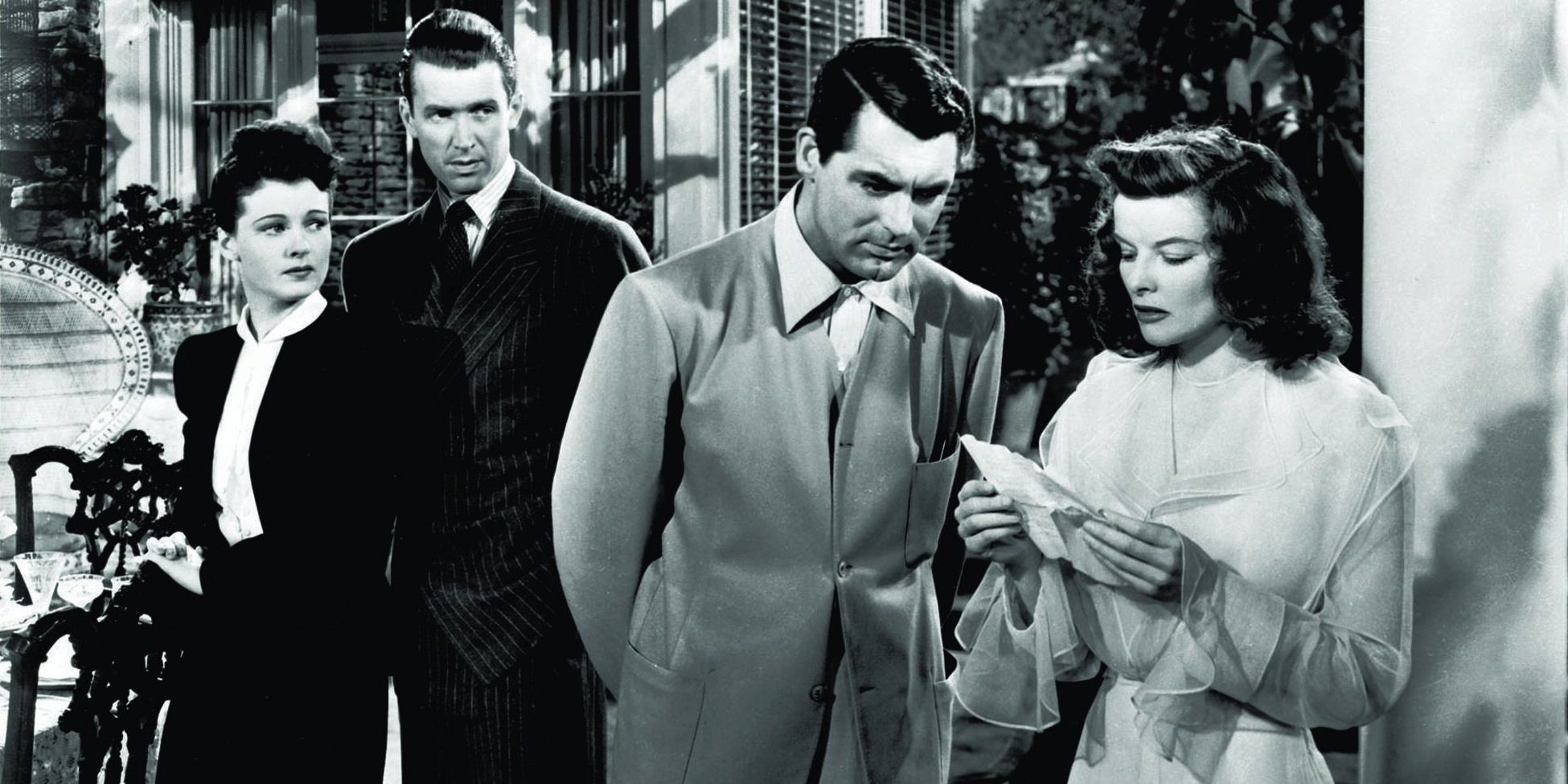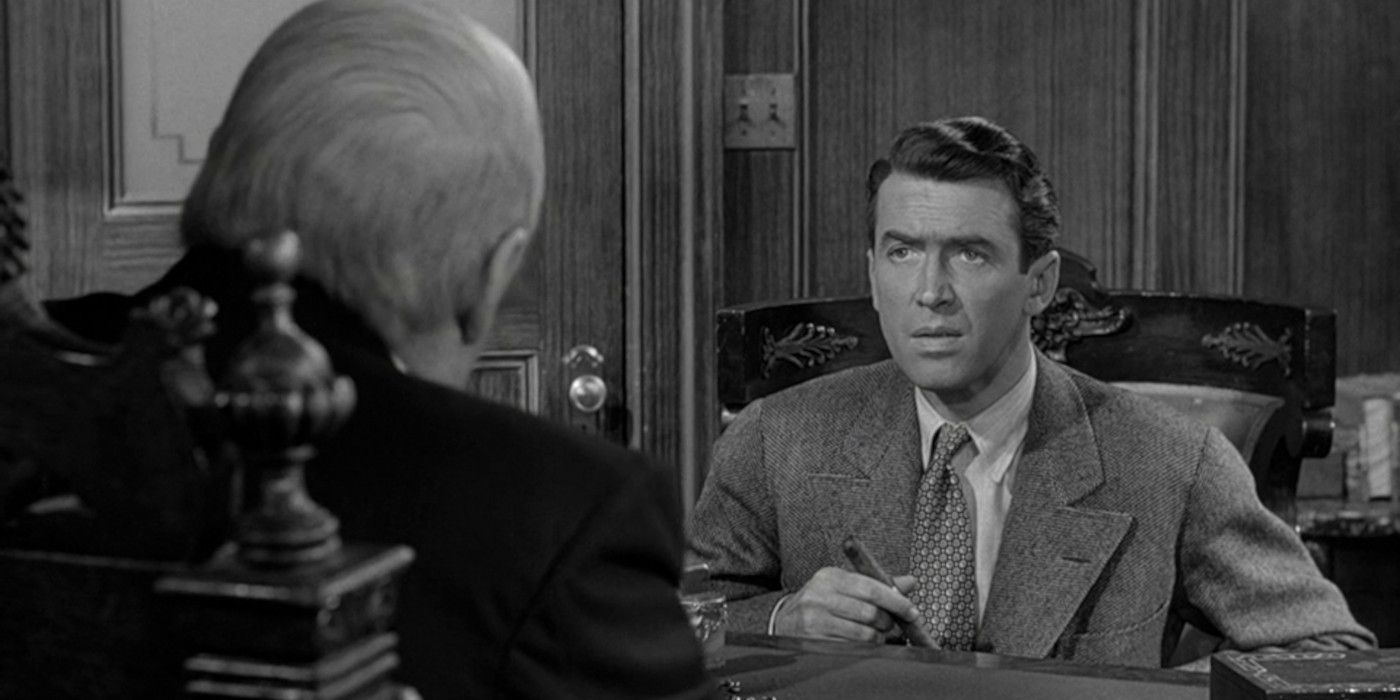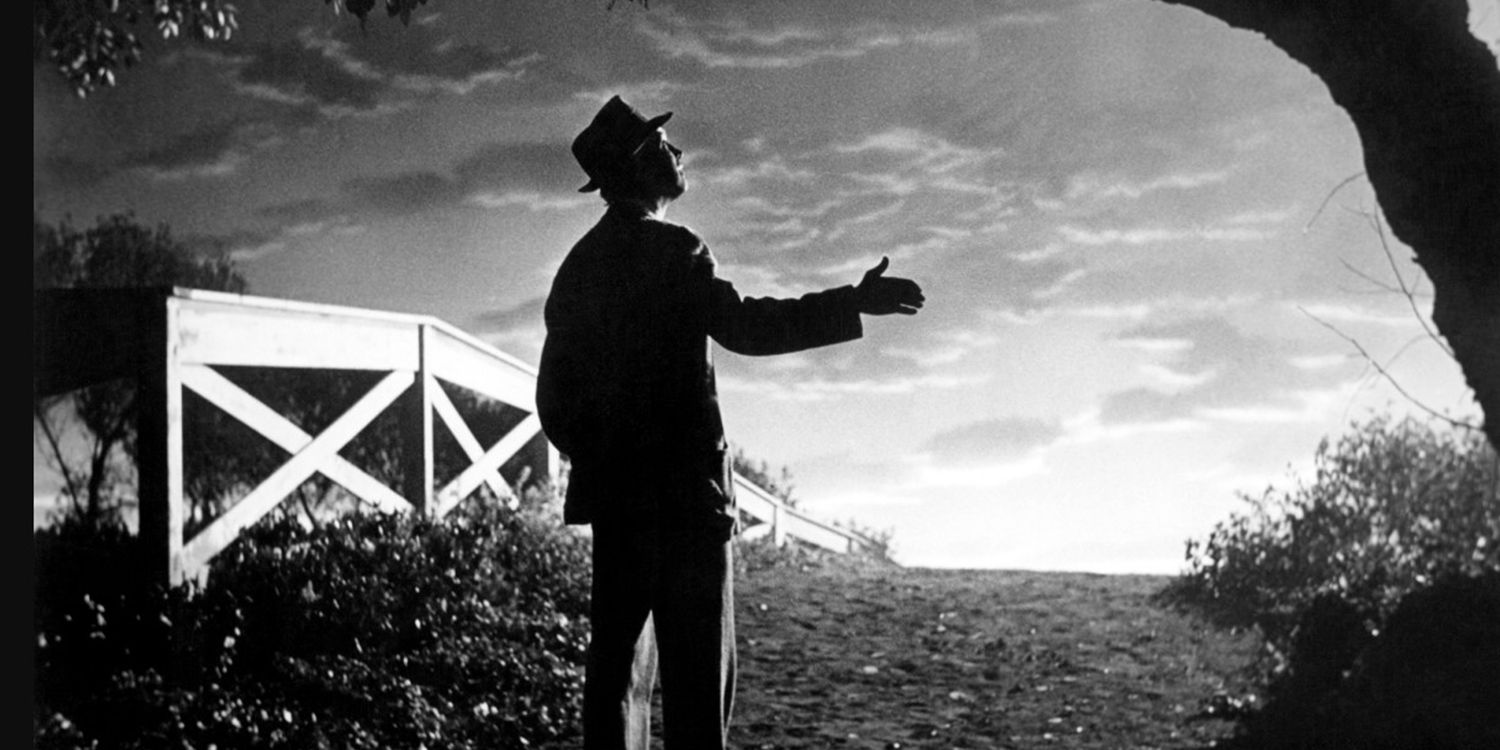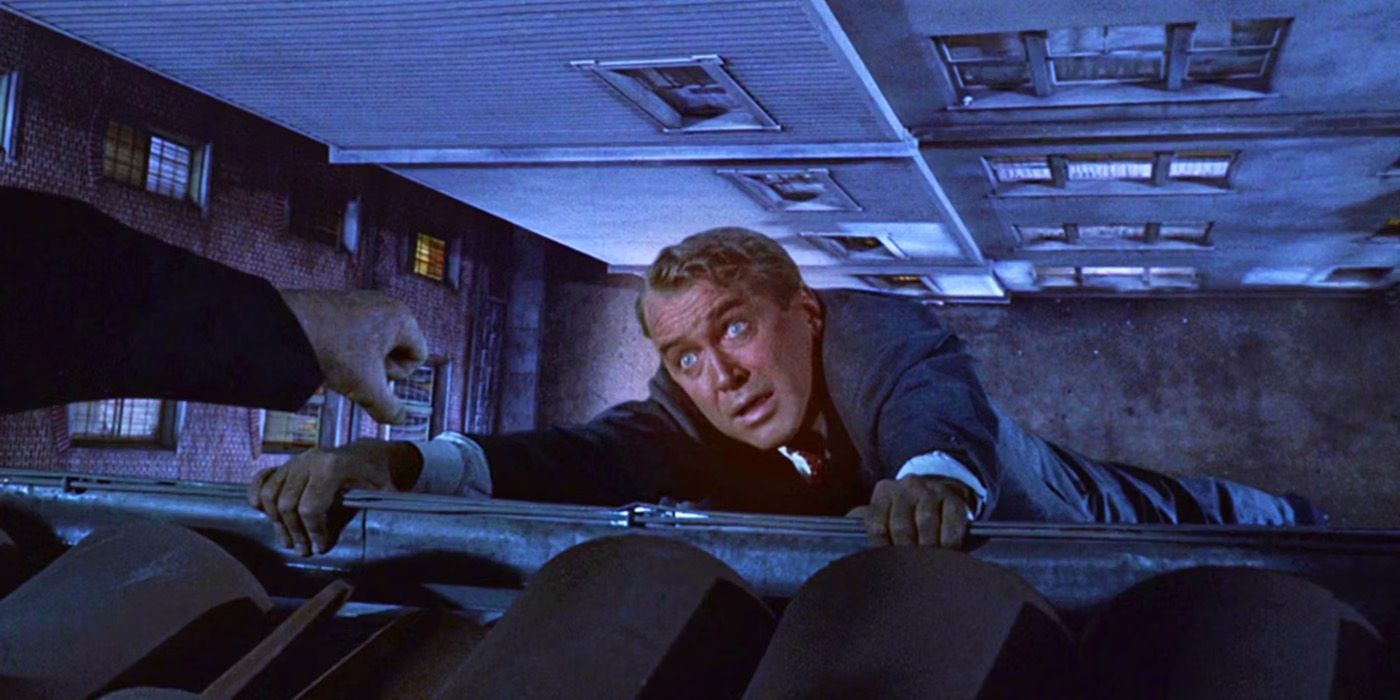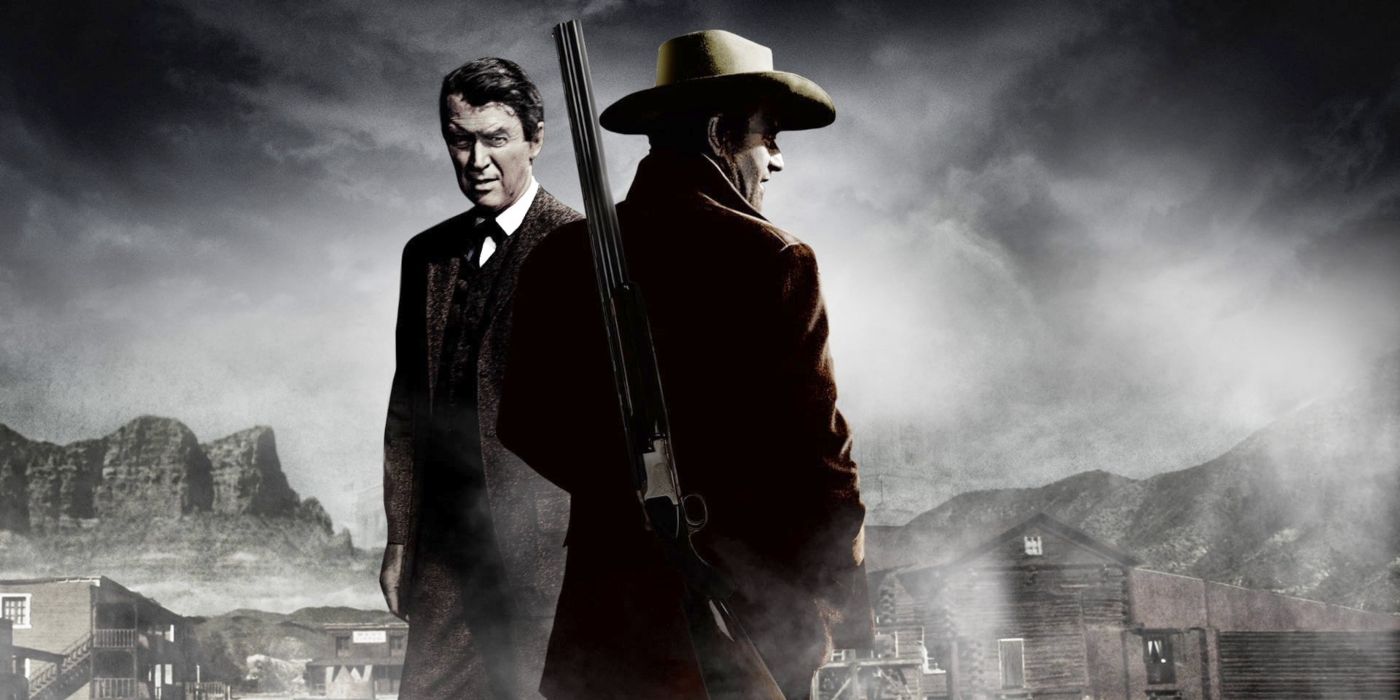As the star of some of the most iconic films ever made, James Stewart’s career was one of the most varied and impressive in Hollywood history. From his acting debut in the 1930s until his semi-retirement at the end of the 1970s, Stewart starred in Christmas classics, acclaimed thrillers by Alfred Hitchcock, and a whole host of beloved rom-coms, screwball comedies, and thought-provoking dramas. As an Academy Award-winning performer, Stewart’s likable persona and distinctive drawl made him the quintessential American ideal whose embodied qualities of strong moral resilience and fortitude.
The best James Stewart movies have stood the test of time, and his definitive roles made him one of Hollywood’s most sought-after performers throughout the 1940s and 1950s. Stewart’s best movies left a major mark on Hollywood, as George Bailey’s story in It’s a Wonderful Life has become annual viewing for families worldwide every holiday season, and his performance Vertigo meant it gained a reputation among the best films ever made. Stewart represented the best of Hollywood’s classic era, and his movies have endured through generations.
8 Mr. Smith Goes To Washington (1939)
James Stewart as Jefferson Smith
Although James Stewart made his feature film debut in 1935, it was not until 1939 that he starred in his first truly timeless role as Jefferson Smith in Mr. Smith Goes to Washington. In this thought-provoking story, Stewart played a newly appointed United States Senator who fought against a corrupt political system. While Smith initially achieved his status due to his perceived naivety, Washington’s political system soon learned that this noble hero was incorruptible and determined to use his power to fight for everyday people.
With eternal themes of political integrity, freedom, and individual power to implement real, meaningful change, Mr. Smith Goes to Washington is as relevant today as when it was first released. With a likable demeanor and impressive onscreen charisma, this early Stewart role perfectly encapsulated the reasons he became such a major star in subsequent years. Stewart possessed serious charm blended with the awkward nature of an everyman, which made him an actor audiences liked to root for and meant he was perfectly cast in Mr. Smith Goes to Washington.
7 The Shop Around the Corner (1940)
James Stewart as Alfred Kralik
While many associate James Stewart with the Christmas classic It’s a Wonderful Life, this was not his first holiday movie, as he also starred in the underrated classic The Shop Around the Corner. This charming story of two leathergoods employees working together in a store in Budapest turned romantic as James Stewart, playing Alfred Kralik, and Margaret Sullavan, as Klara Novak, slowly started to realize they were falling for one another. The Shop Around the Corner highlighted Stewart’s move from slapstick comedies to handsome leading man in several enjoyable rom-coms like Made for Each Other and Come Live with Me.
The Shop Around the Corner
represented the innocent charm of rom-coms from times past as viewers sought tidy love stories to contrast their real-life worries surrounding the Second World War.
With a smart and moving script, The Shop Around the Corner represented the innocent charm of rom-coms from times past as viewers sought tidy love stories to contrast their real-life worries surrounding the Second World War. Stewart and Sulivan made an enjoyable onscreen couple whose impressive sense of comedic timing meant everything here just worked perfectly. The enemies-to-lovers plotline of The Shop Around the Corner would lay the groundwork for similar rom-coms in years to come, such as When Harry Met Sally and You’ve Got Mail.
6 The Philadelphia Story (1940)
James Stewart as Mike Connor
James Stewart earned the Academy Award for Best Actor for his incredible performance in the rom-com The Philadelphia Story. As Mike Connor, Stewart demonstrated his ability to seamlessly blend charm, wit, and vulnerability in the love pentagon of the alluring Tracy, the object of desire for Kittredge, Dex, and Mike. With incredible chemistry between Stewart and his female co-star Katharine Hepburn and the extra star power of Cary Grant as Dexter, this star-studded classic was one of the romance films of its era.
With an astounding 100% critics score on Rotten Tomatoes, The Philadelphia Story has stood the test of time and was a testament to the enduring appeal of Hollywood’s classic era. As a truly sophisticated comedy, Stewart possessed the comedic timing and dramatic skills needed to get the best out of this story of remarriage. This was a highly popular genre of films in the 1930s and 1940s that allowed filmmakers to bypass the Production Code and tell scandalous stories of affairs, cheating, and divorce.
5 It’s A Wonderful Life (1946)
James Stewart as George Bailey
As the definitive Christmas movie, It’s a Wonderful Life showcased everything great about James Stewart. This enduring classic, rewatched by countless families across the world every holiday season, highlighted Stewart’s timeless talent for portraying likable, wholesome characters of strong integrity. Through the story of George Bailey’s realization of what the world would be like had he never been born, viewers learned the meaning of community, family, and the power of the seemingly insignificant moments that make life so joyous.
It’s a Wonderful Life has endured for generations due to the excellent direction of Frank Capra, its poignant narrative, and, of course, Stewart’s incredible characterization. Through George’s struggles and sacrifices, shown to him by a guardian angel trying to earn his wings, It’s a Wonderful Life powerfully depicted its hopeful message of the importance of every individual life. As a movie often included among the greatest films of all time, apart from his work with Alfred Hitchcock, It’s a Wonderful Life was Stewart’s most iconic role.
4 Rope (1948)
James Stewart as Rupert Cadell
The release of Rope, the first of James Stewart and Alfred Hitchcock’s four collaborations, was a major moment in cinematic history. James Stewart starred as Rupert Cadell in this psychological thriller, which was filmed to appear in real-time. The use of long shots and cleverly stitched-together takes made for a seamless viewing experience that would be utilized in later movies such as Birdman and 1917. As a thrilling crime story, Stewart excelled as a man who slowly uncovered the so-called perfect murder gone wrong.
The use of long shots and cleverly stitched-together takes made for a seamless viewing experience that would be utilized in later movies such as
Birdman
and
1917
.
The experimental nature of Stewart and Hitchcock’s first movie was a good omen for their work together, which would go down in cinematic history as some of the best movies ever made. Rope was categorized by slow-building tension in a constricted one-location environment, and its dark crime story was yet another powerful example of Hitchcock’s reputation as the master of suspense. While it was not a big success at the time of its release, in the years since, Rope has become one of Stewart and Hitchcock’s most acclaimed movies.
3 Harvey (1950)
James Stewart as Elwood P. Dowd
The comedy-drama Harvey was a highly unusual entry in James Stewart’s varied filmography. As the story of a man named Elwood P. Dowd, whose best friend was an imaginary over 6-foot-tall white invisible rabbit, this story of what constitutes mental illness was a thought-provoking and forward-thinking film. As Elwood, Stewart brought a sense of humor and vulnerability that’s not easy to pull off, as his likable nature and gentle temperament allowed viewers to empathize with him throughout.
Harvey was a lighthearted film with a sentimental message about the importance of kindness. At times, Harvey acted as a light indictment of the mental health industry. It dealt with the fallout of Elwood’s family, who believed him to be insane, and the ensuing debacle of having him committed to a psychiatric facility. Although Harvey’s representation of mental illness may be out of step with modern times, its heart was in the right place, and its story was packed with unconventional wisdom.
2 Vertigo (1958)
James Stewart as Scottie Ferguson
Although James Stewart’s other collaborations with Alfred Hitchcock, like The Man Who Knew Too Much and Rear Window, have earned their place as timeless cinematic classics, the pinnacle of their work together was their final film, Vertigo. This incredible psychological thriller tells the story of a detective investigating a woman’s strange behavior, only to fall head over heels in love with dark, obsessive, and sinister consequences. As a disturbing subversion of Stewart’s likable persona, the dark characterization of Scottie Ferguson made Vertigo the crown jewel in his acting career.
Vertigo’s reputation has only grown in the years since its release, and the film was even voted the greatest movie of all time by Sight and Sound in 2012 (via British Film Institute.) Vertigo was truly Hitchcock at his best, as its deeply complex psychological story was full of engaging twists and turns that still have the power to shock audiences so many decades later. While Stewart’s disturbing performance was one of the greatest aspects of Vertigo, Kim Novak should also be highlighted for her exceptional role as his mysterious love interest.
1 The Man Who Shot Liberty Valence (1962)
James Stewart as Ranse Stoddard
The Man Who Shot Liberty Valence was truly one of the greatest Western movies where two legendary stars teamed up, bringing together the cinematic titans of James Stewart and John Wayne. With director John Ford at the helm, The Man Who Shot Liberty Valence was an expertly crafted deconstruction of the mythical Old West that commented upon the Western genre while adding something new and interesting to it. Once again, Stewart played into his reputation as Hollywood’s most likable everyman as his character, Ransom Stoddard, embodied the noble ideals of justice, law, and civility.
The Man Who Shot Liberty Valance acted as a statement about glorifying bandits, cowboys, and outlaws in Western movies during a time when the genre was starting to decline in popularity. With Stewart as an idealist and Wayne’s character as a realist, this was a thoughtful Western that peeled back the curtain on the Wild West and the way that legendary stories of reckless outlaws were created. Although James Stewart’s career continued throughout the 1970s before his semi-retirement and eventual death in 1997, The Man Who Shot Liberty Valence signaled the final truly iconic movie in his career.
Source: British Film Institute

